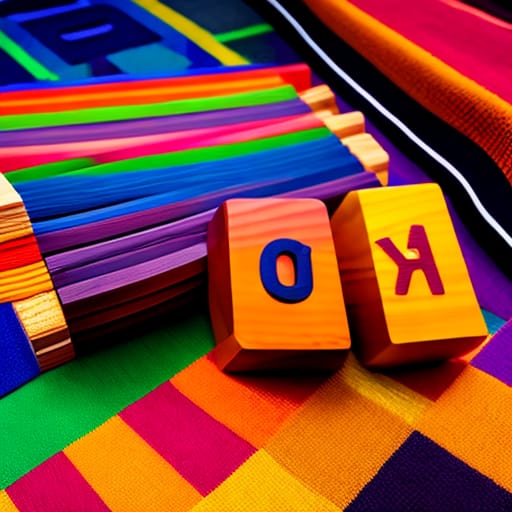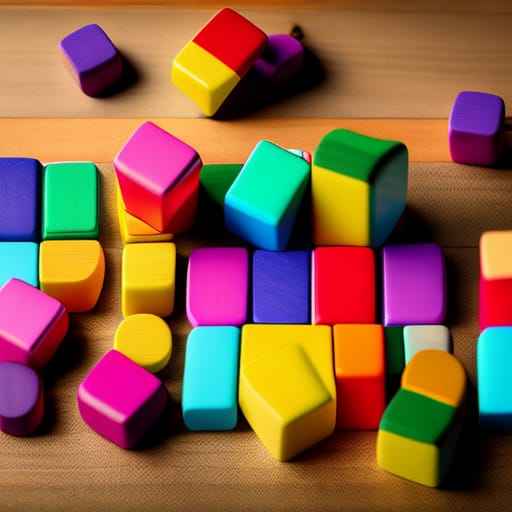Learning the alphabet and building early literacy skills is crucial for every child’s future success in school. Building a strong foundation in letters, letter recognition, and simple words through play paves the way for reading proficiency. That’s why high-quality, educational wooden building blocks featuring the alphabet, phonics, sight words, letter molds, and more make ideal early childhood learning toys.
Whether used in preschool and kindergarten classrooms or incorporated into learning time at home with parents and caregivers, these versatile educational blocks check all the right boxes. Let’s review why wooden alphabet blocks and letter toys build critical skills, what to look for when selecting sets, and some of the best literacy-boosting block options on the market for children and students.

Why Choose Wooden Alphabet and Word Building Blocks?
Wooden blocks featuring letters, words, alphabet concepts, and more offer distinct advantages over plastic or electronic toys when it comes to early reading and spelling ability. Here are some top reasons that simple, back-to-basics wooden letter blocks support healthy development:
- Build fine motor control – Grasping, stacking, and manipulating wooden blocks develops the fine pincer grip muscles and hand-eye coordination children need for handwriting and manipulating a pencil.
- Encourage interaction and engagement – Multi-sensory wooden blocks keep children engaged in hands-on play, exploration, and construction as they touch, stack, line up, and knockdown.
- Support independent play– Simple preschool building blocks with no batteries or complex controls allow for more creativity and independence. Children can freely build and experiment.
- Teach concepts naturally – Tactile wooden blocks with engraved alphabets make models like children’s names, build vocabulary, learn phonics patterns, and see words formed with ease.
- Eco-friendly material – Sustainably sourced wooden blocks have less environmental impact than plastic and don’t contain BPA, phthalates, or other harmful chemicals.
Choosing basic, wooden preschool blocks in shapes like letters, squares, rounds, and rectangles gives children maximum benefit for reading readiness over flashcards, apps, or plastic toy sets. Their simplicity, versatility, and eco-friendly nature make them ideal for early learning.
What to Look for in Early Childhood Building Block Sets
Not all wooden block sets are equally effective for early reading skill-building. Here are key features that ensure wooden literacy blocks have maximum educational impact:
Alphabet focus – Choose block sets that specifically focus on alphabet skills, like individual engraved upper and lower case letter blocks. Building letter recognition is fundamental.
Phonics-based content – Blocks featuring child-friendly words based on letter combinations, rhymes, or syllables allow kids to grasp patterns that form words early on.
Open block design – Blocks with open fronts and backs allow children to see and touch letters from all angles, reinforcing spatial skills.
Color and image integration – Vibrant colors, pictures, and icons help connect images to words and concepts. This boosts early word comprehension.
Variety of block shapes/sizes – A mix of squares, rectangles, and unique shapes improves spatial reasoning and creative construction as children build models.
Durable hardwood material – Select hardwood blocks that can withstand frequent use in classrooms and homes without splintering or needing replacement. bamboo and maple are ideal choices.
Non-toxic finish – Child-safe, water-based finishes ensure wooden blocks pose no health risks if blocks end up in kids’ mouths during play.
Following these criteria helps parents, teachers, and caregivers select effective wooden letter and word blocks for improving young students’ literacy. Check ratings and reviews to verify quality.

Top-Rated Building Block Sets for Early Reading
Now that you know what makes a great early literacy wooden block set, here is a comparison of some top-rated alphabet wooden blocks on the market from vendors like Hand2Mind, Legend Bricks, and Lauri Toys.
Hand2Mind Giant Wooden ABC Block Cart Set – Featuring over 140 hand-crafted basswood blocks with engraved upper and lower case letters in different colors, this is the ultimate alphabet block set. The comprehensive selection of block sizes for building words makes it a top choice. Comes with a sturdy, lockable hardwood cart with durable wheels for storage and portability.
Legend Bricks Wooden Phonics Letter Building Blocks – This reasonably priced 120-piece set includes alphabet blocks for the full alphabet in uppercase and lowercase, with vowels accentuated in blue. Sets also include blocks featuring words based on simple phonics rules students learn early on, like “at words” (cat, bat, sat). Smooth sanded finish of natural wood.
Lauri Tall Stacker Pegs and Build-a-Word Blocks – This introductory 28-block lowercase letter set made of rubber wood is ideal for toddlers and preschoolers. With iconic images on letter tiles (A for apple, B for butterfly) and bright colors, this engaging option helps youngsters grasp letter sounds and start building simple three-letter words. Stacker pegs boost motor skills.
“Having access to wooden blocks featuring a multitude of letters, word patterns, and phonics developmental guides ensures our kindergarten teachers have all the tools they need to build strong literacy foundations,” said Emma Thompson, Elementary Educator and Child Development Expert at Cornerstone Elementary School. “Students thrive when they can freely explore and construct models using these tactile blocks right in the classroom.”
Beyond major classroom use, small take-home alphabet block sets allow parents to continue reinforcing phonics concepts and spelling practice at home between school sessions.
When shopping for alphabet blocks, prioritize larger sets with a greater variety of engraved letters, words, shapes, and storage systems if budget allows. Individual block sets start under $25, with more extensive classroom-sized sets ranging up to $180. Whether building a classroom collection or getting that first set to encourage playful learning in children as young as 1-year-old, look for quality materials and designs optimized to boost early reading.

The Building Blocks of Reading Readiness
From fine motor skills to improved word recognition, phonics skills, and reading confidence, wooden blocks offer a simple yet highly-effective tool for developing the building blocks of literacy in young students both in the classroom and at home. Allowing children to freely construct while grasping foundational concepts sets them up for future achievement.
Expert teacher Emma Thompson confirms, “I can’t overstate the impact basic wooden letter and word blocks have on the growth I see in students’ alphabet knowledge, sight word recognition, and spelling ability over the course of a school year. They lay a strong foundation for reading and writing milestones.”
Give toddlers through early elementary students an advantage by incorporating these versatile educational wooden block sets into their play and hands-on lessons. Watch their language and literacy confidence stack up!
FAQs
What are the main benefits of using wooden letter blocks for early literacy?
Wooden alphabet blocks help build fine motor control, letter recognition, basic phonics, and word construction skills through hands-on play. Manipulating the blocks develops dexterity while seeing and feeling letter shapes supports early reading fundamentals.
What concepts can preschoolers learn from letter blocks?
Key early literacy concepts kids grasp from wooden blocks include alphabet awareness, letter name recognition, letter-sound relationships, onset rhyme, word families, sight words, consonant blends, and more. Building models imprints concepts.
What block features should I look for when buying wood letter blocks?
Prioritize durable hardwood material with a non-toxic finish, engraved uppercase and lowercase letters, vivid colors, open fronts and backs, variety of square and rectangular blocks for word-building flexibility and storage.
How do preschool teachers use wooden letter blocks in the classroom?
Teachers use letter blocks in guided lessons on letter names, sounds, and word patterns. Children also use them freely during playtime to construct models, words, or their names, developing familiarity with letters. Classrooms need multiple block sets.
Can wooden blocks also teach math concepts to young kids?
Yes, wooden blocks foster sorting, patterning, counting, shape recognition, and positional concepts like over/under and balance. Math-focused block sets add numbers, math symbols, and fraction insets to broaden the early math learning potential.
Are wooden letter blocks equally good for boys and girls?
Wooden alphabet blocks appeal equally to boys and girls for hands-on play. Open-ended building options spur creativity in all children, with engraved letters, words, and icons offering focused literacy instruction. They are universally engaging.